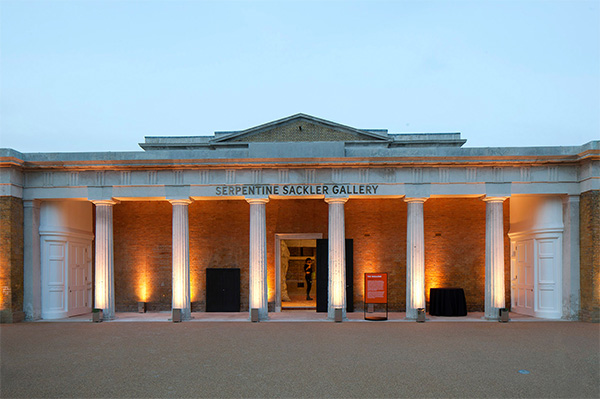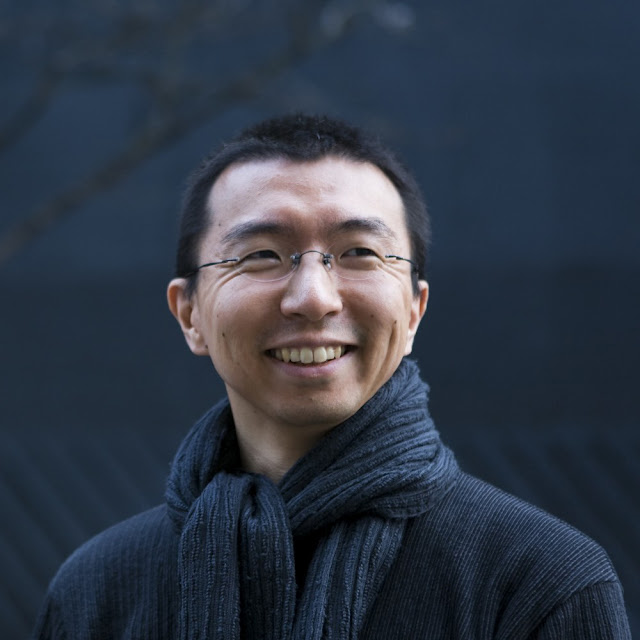SERPENTINE
PAVILION DESIGN BY SOU FUJIMOTO
This Thursday, the official opening of
the Serpentine Pavilion, by Sou Fujimoto, took place in
Hyde Park, London. It was the first time the public
could interact with the structure.
The pavilion, which has already gotten the “cloud”
nickname because of its shape and lightness, is generated through a
three-dimensional steel grid of about 40 centimetre modules
which morphs on each side. The structure is broken to allow people access as
well as to generate different uses around, below and upon it.
“For the Serpentine Pavilion 2013, I have created
a translucent architecture, a terrain that encourages people to explore
the site in new and diverse ways. Within the pastoral context
of Kensington Gardens, the vivid greenery surrounding the site merges with
the constructed geometry of the Pavilion. A new form of environment has
been created, where the natural and the man-made fuse. The inspiration for
the design of the Pavilion was the concept that geometry and constructed
forms could meld with the natural and the human. The fine, fragile grid creates
a strong structural system that can expand to become a large cloud-like
shape, combining strict order with softness. A simple cube, sized to the
human body, is repeated to build a form that exists between the organic
and the abstract, to create an ambiguous, soft-edged structure that will
blur the boundaries between interior and exterior.
The Serpentine Pavilion 2013 is a delicate,
three-dimensional, latticed structure, each unit of which is composed of
fine steel bars. It forms a semi-transparent, irregular
shape, simultaneously protecting visitors from the elements while allowing
them to remain part of the landscape. The depth of the grid at different
locations will create thicker walls or thinner, transparent sections. The
building’s footprint is 357 square metres and the gross internal area is
142 square metres. The Pavilion has two entrances, with a series of
stepped terraces to provide integrated seating. The topography of the grid is a
flexible, multi-purpose social space, where the walls, seating and roof
are made of the same steel cubes. In this way, the organic structure of
the Pavilion overall creates an adaptable terrain, encouraging visitors to
create their own experience of the building.
Whether attending an event or simply relaxing in
the Park, each person is invited to find a singular, favourite space
inside and around the Pavilion. By day, it will function as a space open
to all visitors, with a café. The largest of the terraced areas can be used
as an events space, while other terraces provide further spaces for
visitors to inhabit and explore. From certain vantage points, the fragile
cloud of the Pavilion appears to merge with the classical structure of the
Serpentine Gallery, its visitors suspended in the space between architecture
and nature.”
Sou Fujimoto
A
A
A
A
A
SERPENTINE SACKLER GALLERY, LONDON
SERPENTINE SACKLER GALLERY, LONDON
A
A
A
A
A
A
A
A
SOU FUJIMOTO
(BORN 1971) ARCHITECTS, TOKYO, 2000
Sou Fujimoto studied architecture at University of
Tokyo before establishing his own studio, Sou Fujimoto Architects, in 200. His
projetcs include Children’s Centre for Psychiatric Rehabilitation (2003), in
Hokkaido, Final Wooden House (2006-2008), in Kuma-gun, Musashino Art University
Museum and Library (2007-2010), and the 2013 Serpentine Gallery Pavilion, in
London. Fujimoto’s recent work includes winning competition designs for Ecole
Polytechnique at Universite Paris-Saclay and House of Hungarian Music in
Budapest. Fujimoto has taught at Tokyo University of Science, University of
Tokyo, Kyoto University, Keio University, and University of
Wiskonsin-Milwaukee, and was a judge at the World Architecture Festival in
2015. His writings have been published widely and his work exhibited
internationally, most recently in Sou Fujimoto: Futures of the Future (2015),
held at Toyo Gallery and Shangai Museum of Contemporary Art. He was awarded a
Royal Instıtute of British Architects International Fellowship in 2012, and
received the 2014 WSJ Magazine Architecture Innovator Award, 2013 Marcus Prize,
and 2008 Private House award from the World Architecture Festival for Final
Wooden House. He was corecipient of the Golden Lion at the thirteenth
International Architecture Exhibition, La Biennale di venezi, in 2012. In 2008,
Fujimoto published Primitive Future (INAX, Tokyo), which became the year’s
bestselling architecture book.
You may visit
news of A Japanese Constellation exhibition at MoMA to see Sou Fujimoto’s
design to click below link.
http://mymagicalattic.blogspot.com.tr/2016/04/a-japanese-constellation-toyo-ito-sanaa.html










































